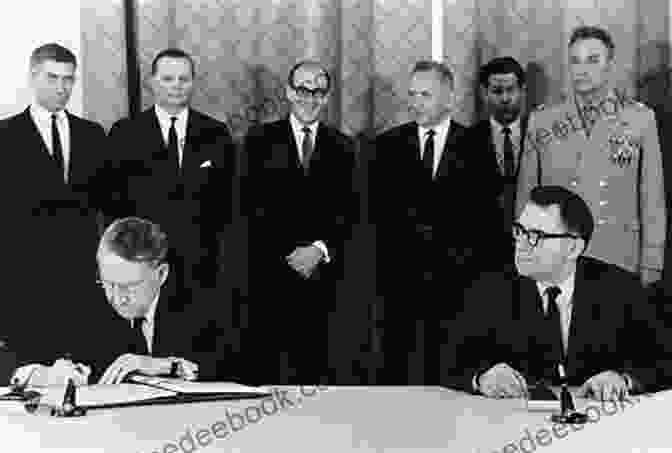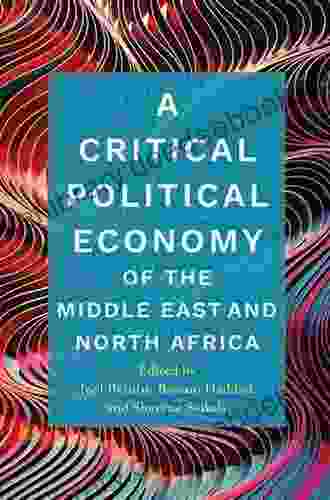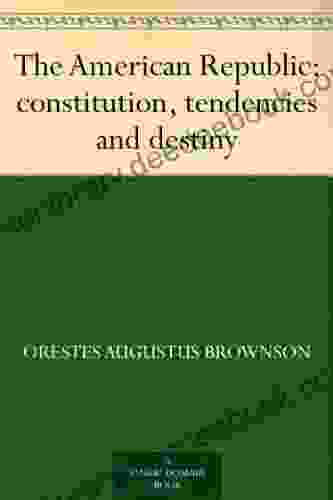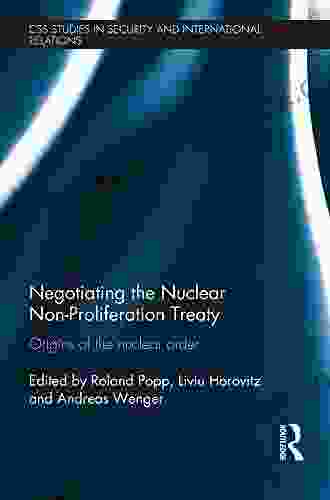Navigating the Intricate Landscape of the Nuclear Non-Proliferation Treaty


The Nuclear Non-Proliferation Treaty (NPT) stands as a cornerstone of global efforts to prevent the spread of nuclear weapons, foster international cooperation in peaceful nuclear energy development, and promote nuclear disarmament. Adopted in 1968, the treaty has since been signed by 191 countries, making it one of the most widely accepted arms control agreements in history. However, negotiating and maintaining the NPT has been an intricate and challenging process, marked by complex geopolitical dynamics, technological advancements, and evolving security threats.
5 out of 5
| Language | : | English |
| File size | : | 4385 KB |
| Text-to-Speech | : | Enabled |
| Screen Reader | : | Supported |
| Enhanced typesetting | : | Enabled |
| Word Wise | : | Enabled |
| Print length | : | 260 pages |
The Genesis of the NPT: Cold War Tensions and Nuclear Concerns
The NPT was conceived during the height of the Cold War, an era characterized by heightened nuclear tensions between the United States and the Soviet Union. The development of nuclear weapons by multiple countries raised concerns about the potential for nuclear proliferation and the devastating consequences of a nuclear war. Recognizing the urgent need to prevent the spread of nuclear weapons, the United Nations General Assembly adopted Resolution 2373 in 1968, calling for the negotiation of a comprehensive non-proliferation treaty.
Key Pillars of the NPT: A Balancing Act
The NPT is structured around three main pillars:
- Non-Proliferation: Nuclear-weapon states (NWSs) agree not to transfer nuclear weapons or nuclear technology to non-nuclear-weapon states (NNWSs),and NNWSs undertake not to receive or manufacture nuclear weapons.
- Peaceful Nuclear Energy Cooperation: NWSs agree to cooperate with NNWSs in the development and utilization of nuclear energy for peaceful purposes, including the transfer of technology and materials for civilian nuclear power generation.
- Nuclear Disarmament: All parties commit to pursuing negotiations in good faith towards nuclear disarmament and general and complete disarmament.
Negotiations, Challenges, and Key Milestones
Negotiating the NPT proved to be a formidable task, requiring extensive diplomatic efforts and compromises. Key milestones in the process included:
- 1968: The United States, the United Kingdom, and the Soviet Union submit draft proposals for the treaty. - 1970: The NPT is adopted by the United Nations General Assembly. - 1972: The NPT enters into force after the requisite number of countries ratify it. - 1975: The first NPT Review Conference is held to assess progress and identify areas for improvement. - 1995: The NPT is extended indefinitely, removing the sunset clause that would have terminated it in 1995.
The Review Process: Regular Assessments and Adjustments
The NPT is subject to regular review conferences, held every five years, to assess its implementation, address emerging concerns, and strengthen its provisions. These conferences have played a crucial role in adapting the treaty to changing global circumstances. For example:
- 2000 Review Conference: Emphasized the need for further nuclear disarmament and strengthened the provisions for peaceful nuclear energy cooperation. - 2015 Review Conference: Focused on the importance of nuclear security, the prevention of nuclear terrorism, and the establishment of a Middle East zone free from nuclear weapons and other weapons of mass destruction.
Criticisms and Controversies
Despite its widespread acceptance, the NPT has faced criticisms and controversies:
- Discrimination Allegations: NNWSs have argued that the treaty unfairly discriminates against them by limiting their access to nuclear technology while allowing NWSs to maintain their nuclear arsenals. - Lack of Progress on Disarmament: Critics contend that the NWSs have not made sufficient progress towards nuclear disarmament, as required by Article VI of the treaty. - Withdrawal Threats: Several countries, including North Korea and Iran, have withdrawn from or threatened to withdraw from the NPT, citing concerns over their security and the perceived inequality of the treaty.
Emerging Challenges and the Future of the NPT
The NPT continues to face significant challenges in the 21st century:
- Nuclear Terrorism: Preventing the use of nuclear materials by terrorist groups poses a growing threat, requiring enhanced security measures and international cooperation. - Technological Advancements: The development of new technologies, such as nuclear nonproliferation technologies and alternative energy sources, could impact the treaty's provisions and scope. - Geopolitical Dynamics: Regional tensions and the rise of new nuclear powers, such as India and Pakistan, complicate the NPT's implementation and the pursuit of nuclear disarmament.
The future of the NPT depends on the willingness of the international community to address these challenges, strengthen the treaty, and advance its goals of non-proliferation, nuclear energy cooperation, and disarmament.
The Nuclear Non-Proliferation Treaty remains a vital instrument for preventing the spread of nuclear weapons and promoting global security. Despite its complexities and challenges, the NPT has facilitated international cooperation, fostered technological advancements, and contributed to reducing nuclear risks. As the world continues to face nuclear threats and security concerns, the NPT remains a central pillar of the global non-proliferation architecture and a testament to the enduring need for diplomatic efforts in the pursuit of a nuclear-free world.
5 out of 5
| Language | : | English |
| File size | : | 4385 KB |
| Text-to-Speech | : | Enabled |
| Screen Reader | : | Supported |
| Enhanced typesetting | : | Enabled |
| Word Wise | : | Enabled |
| Print length | : | 260 pages |
Do you want to contribute by writing guest posts on this blog?
Please contact us and send us a resume of previous articles that you have written.
 Book
Book Novel
Novel Story
Story Genre
Genre E-book
E-book Magazine
Magazine Newspaper
Newspaper Shelf
Shelf Glossary
Glossary Foreword
Foreword Preface
Preface Synopsis
Synopsis Annotation
Annotation Footnote
Footnote Manuscript
Manuscript Codex
Codex Tome
Tome Bestseller
Bestseller Classics
Classics Narrative
Narrative Reference
Reference Encyclopedia
Encyclopedia Dictionary
Dictionary Narrator
Narrator Character
Character Resolution
Resolution Catalog
Catalog Card Catalog
Card Catalog Borrowing
Borrowing Stacks
Stacks Archives
Archives Research
Research Lending
Lending Academic
Academic Journals
Journals Rare Books
Rare Books Literacy
Literacy Thesis
Thesis Dissertation
Dissertation Reading List
Reading List Cindy Rollins
Cindy Rollins Emory Gayle
Emory Gayle Pierre Clavel
Pierre Clavel Pauline Maier
Pauline Maier Mike Duran
Mike Duran Teddy Hitaffer
Teddy Hitaffer Gian Paolo Marcolongo
Gian Paolo Marcolongo John Russell Rickford
John Russell Rickford Tanja Stern
Tanja Stern Dave Holloway
Dave Holloway A Michelle
A Michelle Harry Mazer
Harry Mazer Mike Gould
Mike Gould Herbert Strang
Herbert Strang Todd Huizinga
Todd Huizinga Ann Fahl
Ann Fahl Dan K Utley
Dan K Utley Kevin David Anderson
Kevin David Anderson Lester K Spence
Lester K Spence Dennis L Dresang
Dennis L Dresang
Light bulbAdvertise smarter! Our strategic ad space ensures maximum exposure. Reserve your spot today!
 Tyler NelsonFollow ·5.8k
Tyler NelsonFollow ·5.8k Jerome PowellFollow ·19.7k
Jerome PowellFollow ·19.7k Jimmy ButlerFollow ·18.8k
Jimmy ButlerFollow ·18.8k James GrayFollow ·15.1k
James GrayFollow ·15.1k Truman CapoteFollow ·7.1k
Truman CapoteFollow ·7.1k Bruce SnyderFollow ·3.5k
Bruce SnyderFollow ·3.5k Kevin TurnerFollow ·17.5k
Kevin TurnerFollow ·17.5k Tony CarterFollow ·6.9k
Tony CarterFollow ·6.9k

 Bo Cox
Bo CoxDiscover the Enchanting Allure of Collingwood, Ontario,...
Nestled amidst the breathtaking landscape of...

 Ralph Ellison
Ralph EllisonThe Street of Clocks Poems: A Poetic Journey Through Time
Welcome to The Street...

 Dwight Blair
Dwight BlairCritical Political Economy of the Middle East and North...
The Middle East and...

 Deion Simmons
Deion SimmonsPerfect Strategies For Painting Amazing Marine Creatures...
Gouache is a...

 Hugh Bell
Hugh BellThe American Republic: Constitution, Tendencies, and...
The American Republic,...
5 out of 5
| Language | : | English |
| File size | : | 4385 KB |
| Text-to-Speech | : | Enabled |
| Screen Reader | : | Supported |
| Enhanced typesetting | : | Enabled |
| Word Wise | : | Enabled |
| Print length | : | 260 pages |














